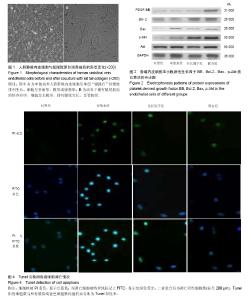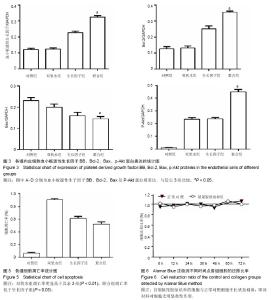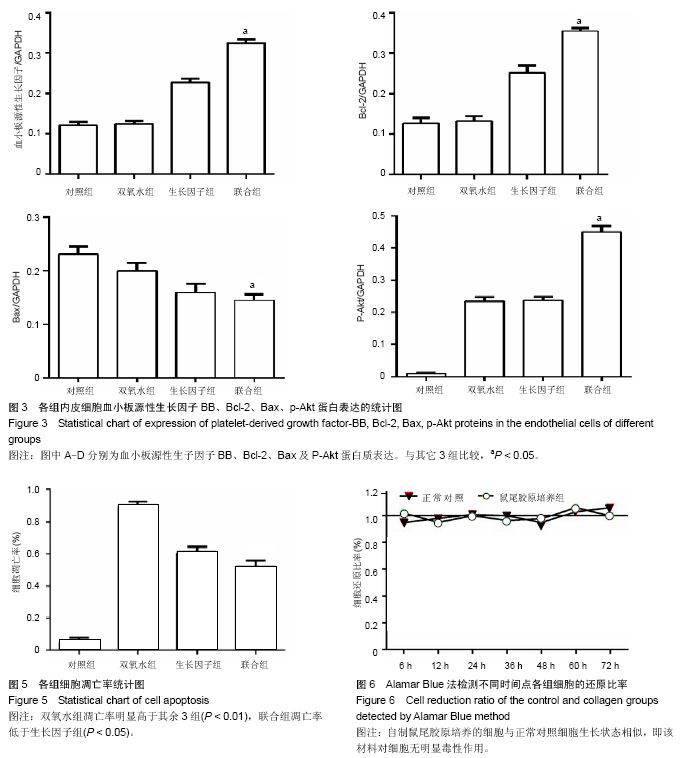| [1] WRITING GROUP MEMBERS, Lloyd-Jones D, Adams RJ,et al. Heart disease and stroke statistics--2010 update: a report from the American Heart Association.Circulation. 2010;121(7): 46-e215.
[2] Aszodi A,Legate KR,Nakchbandi I,et al.What mouse mutants teach us about extracellular matrix function.Annu Rev Cell Dev Biol.2006;22:591-621.
[3] Gomez-Mauricio RG,Acarregui A,Sanchez-Margallo FM,et al.A preliminary approach to the repair of myocardial infarction using adipose tissue-derived stem cells encapsulated in magnetic resonance-labelled alginate microspheres in a porcine model.Eur J Pharm Biopharm. 2013;84(1):29-39.
[4] Liu BH,Yeh HY,Lin YC,et al.Spheroid formation and enhanced cardiomyogenic potential of adipose-derived stem cells grown on chitosan.Biores Open Access,2013;2(1):28-39.
[5] Awad HA,Boivin GP,Dressler MR,et al.Repair of patellar tendon injuries using a cell-collagen composite.J Orthop Res.2003;21(3):420-431.
[6] Juncosa-Melvin N,Shearn JT,Boivin GP,et al.Effects of mechanical stimulation on the biomechanics and histology of stem cell-collagen sponge constructs for rabbit patellar tendon repair.Tissue Eng.2006;12(8):2291-2300.
[7] Juncosa-Melvin N,Matlin KS,Holdcraft RW, et al. Mechanical stimulation increases collagen type I and collagen type III gene expression of stem cell-collagen sponge constructs for patellar tendon repair.Tissue Eng. 2007;13(6):1219-1226.
[8] Serpooshan V,Zhao M,Metzler SA,et al.The effect of bioengineered acellular collagen patch cardiac recodeling and ventricular function postmyocardial infarction. Biomaterials. 2013;34(36):9048-9055.
[9] Lange S, Heger J, Euler G,et al.Platelet-derived growth factor BB stimulates vasculogenesis of embryonic stem cell-derived endothelial cells by calcium-mediated generation of reactive oxygen species. Cardiovasc Res.2009;81(1):159-168.
[10] Krausgrill B,Vantler M,Burst V,et al.Influence of cell treatment with PDGF-BB and reperfusion on cardiac persistence of mononuclear and mesenchymal bone marrow cells after transplantation into acute myocardial infarction in rats.Cell Transplant.2009;18(8):847-853.
[11] Choi KH,Kim JE,Song NR,et al.Phosphoinositide 3-kinase is a novel target of piceatannol for inhibiting PDGF-BB-induced proliferation and migration in human aortic smooth muscle cells.Cardiovasc Res.2010;85(4):836-844.
[12] Malhi H,Irani AN,Gagandeep S,et al. Isolation of human progenitor liver epithelial cells with extensive replication capacity and differentiation into mature hepatocytes.J Cell Sci.2002;115(Pt 13):2679-2688
[13] Wang G, Hamid T,Keith RJ,et al.Cardioprotective and Antiapoptotic Effects of Heme Oxygenase-1 in the Failing Heart.Circulation.2010;121(17):1912-1925.
[14] Aszódi A,Legate KR, Nakchbandi I,et al.What mouse mutants teach us about extracellular matrix function. Annu Rev Cell Dev Biol.2006;22:591-621.
[15] Sanchez C,Arribart H,Guille MM.Biomimetism and bioinspiration as tools for the design of innovative materials and systems.Nat Mater.2005;4(4):277-288.
[16] Huang NF, Yu J, Sievers R, et al. Injectable biopolymers enhance angiogenesis after myocardial infarction. Tissue Eng.2005;11:1860-1866.
[17] Nicosia RF, Ottinetti A.Modulation of microvascular growth and morphogenesis by reconstituted basement membrane gel in three-dimensional cultures of rat aorta: a comparative study of angiogenesis in matrigel, collagen, fibrin, and plasma clot.In Vitro Cell Dev Biol.1990;26(2):119-128.
[18] Vailhé B, Ronot X, Tracqui P,et al.In vitro angiogenesis is modulated by the mechanical properties of fibrin gels and is related to alpha(v)beta3 integrin localization.In Vitro Cell Dev Biol Anim.1997;33(10):763-773.
[19] Bach TL,Barsigian C,Chalupowicz DG,et al.VE-Cadherin mediates endothelial cell capillary tube formation in fibrin and collagen gels.Exp Cell Res. 1998;238(2):324-334.
[20] Harrington EA,Bennett MR,Fanidi A,et al.c-Myc-induced apoptosis in fibroblasts is inhibited by specific cytokines. EMBO J. 1994;13(14):3286-3295.
[21] Datta SR, Dudek H,Tao X,et al.Akt phosphorylation of BAD couples survival signals to the cell-intrinsic death machinery. Cell.1997;91(2):231-241.
[22] Vantler M, Karikkineth BC, Naito H,et al.PDGF-BB protects cardiomyocytes from apoptosis and improves contractile function of engineered heart tissue.J Mol Cell Cardiol. 2010; 48(6):1316-1323.
[23] Dai W,Wold LE, Dow JS,et al.Thickening of the infarcted wall by collagen injection improves left ventricular function in rats: a novel approach to preserve cardiac function after myocardial infarction.J Am Coll Cardiol.2005;46:714-719.
[24] Bach TL,Barsigian C,Chalupowicz DG,et al.VE-Cadherin mediates endothelial cell capillary tube formation in fibrin and collagen gels.Exp Cell Res. 1998;238(2):324-334.
[25] Ozawa CR, Banfi A, Glazer NL,et al.Microenvironmental VEGF concentration, not total dose, determines a threshold between normal and aberrant angiogenesis.J Clin Invest. 2004;113(4):516-527. |



